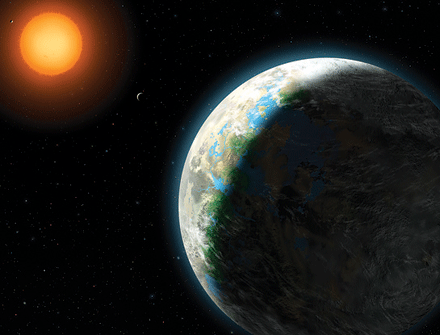Advertisement
Grab your lab coat. Let's get started
Welcome!
Welcome!
Create an account below to get 6 C&EN articles per month, receive newsletters and more - all free.
It seems this is your first time logging in online. Please enter the following information to continue.
As an ACS member you automatically get access to this site. All we need is few more details to create your reading experience.
Not you? Sign in with a different account.
Not you? Sign in with a different account.
ERROR 1
ERROR 1
ERROR 2
ERROR 2
ERROR 2
ERROR 2
ERROR 2
Password and Confirm password must match.
If you have an ACS member number, please enter it here so we can link this account to your membership. (optional)
ERROR 2
ACS values your privacy. By submitting your information, you are gaining access to C&EN and subscribing to our weekly newsletter. We use the information you provide to make your reading experience better, and we will never sell your data to third party members.
Physical Chemistry
Earth Gets A Doppelganger
Exoplanets: Astronomers discover habitable planet orbiting nearby star
by Elizabeth K. Wilson
October 4, 2010
| A version of this story appeared in
Volume 88, Issue 40

For the first time, astronomers have discovered a planet outside our solar system that has the potential to support life. The planet, which orbits a star only 20 light-years away from Earth, is similar in size and temperature to Earth, making it possible for liquid water and an atmosphere to exist—two essential criteria for habitability.
Team members Steven S. Vogt, professor of astronomy and astrophysics at the University of California, Santa Cruz, and astronomer R. Paul Butler of Carnegie Institution of Washington announced their findings at a press conference on Sept. 28.
Using the HIRES spectrometer designed by Vogt, at the Keck I Telescope on top of Mauna Kea in Hawaii, the team observed a dim star 240 times over a period of 11 years and indirectly detected the planet, known as Gliese 581g, from a small but telltale gravitational wobble it generates in the star. The discovery will be reported in an upcoming issue of Astrophysical Journal.
Although nearly 500 exoplanets have been discovered since the first was found in 1992, none has been small enough, cool enough, or warm enough to be deemed habitable. Many of them are giant planets that are likely similar to our gas giants Jupiter and Saturn. As telescopic technology improves, astronomers have in recent years been finding exoplanets that are more similar to Earth in size and orbit.
The researchers said their discovery was made possible by data another team had generated using the HARPS spectrometer at the Geneva Observatory. That team discovered four of the six planets in the same system. The orbits of two of those planets bracket the orbit of Gliese 581g. The planet closest to the sun is too hot to support life, whereas the one farther out is too cold. But Gliese 581g, in the middle, jokingly dubbed “Goldilocks,” is “just right,” Vogt said.
One side of Gliese 581g is constantly exposed to the sun, and the other is constantly shaded. In between these areas, Vogt said, are likely patches with constant habitable conditions.
Direct spectroscopic examination of an exoplanet’s atmosphere for species such as O2, water, or methane requires that the planet pass directly in front of its star from Earth’s line of sight. Gliese 581g’s orbit isn’t properly oriented for such observations, but discovering another such exoplanet won’t take long, Butler predicted. “It’s likely that in the next couple of years many more [Earth-like exoplanets] will be found,” he said.





Join the conversation
Contact the reporter
Submit a Letter to the Editor for publication
Engage with us on Twitter